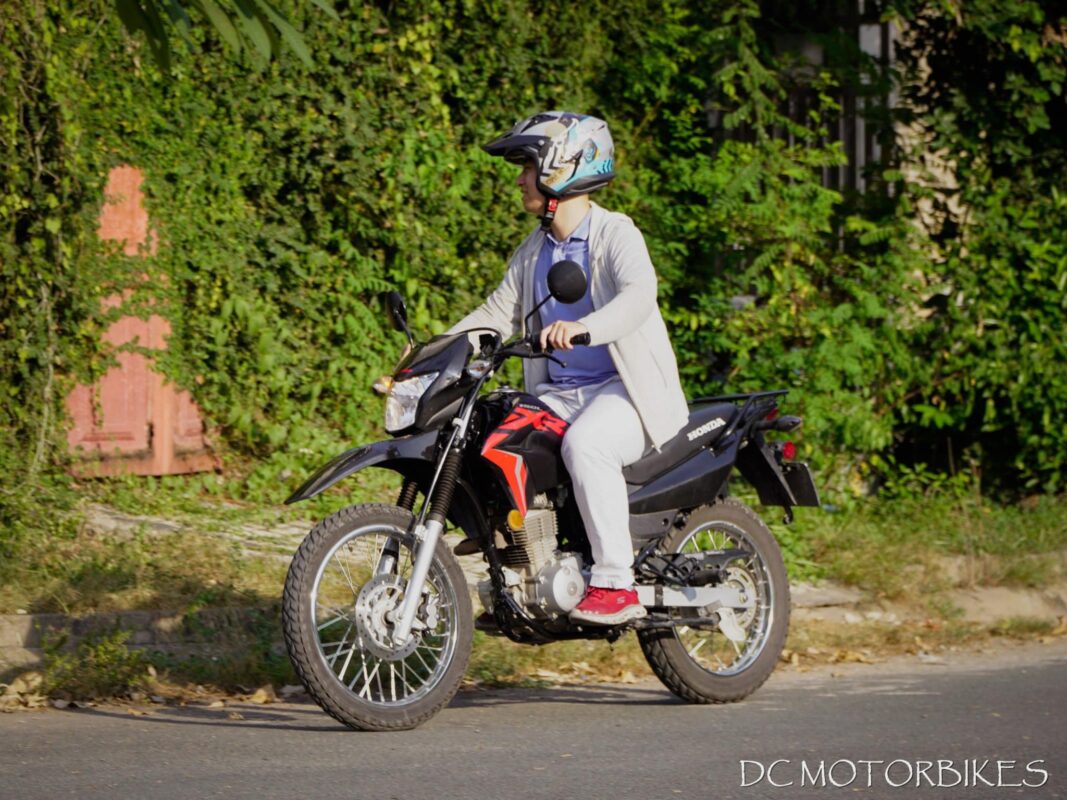Riding a manual motorcycle is not too difficult, as long as you remember a few principles such as “clutch out, throttle in”, pay attention to shifting gears at the appropriate speed, and practice regularly, you will surely be fascinated from the moment you don’t know.
A manual motorcycle is a type of motorcycle that has a manual clutch system, specifically there is a clutch lever on the left side of the handlebar, which is squeezed to disengage and released to engage the clutch. Because of these characteristics, manual motorcycles also have a different operating method than conventional motorcycles.
How to self-learn to ride a manual motorcycle ?

How to start a motorcycle and find the clutch friction point
Practice the following steps repeatedly:
Step 1: Shift to neutral before starting the engine.
Step 2: Start the engine at low idle for a few minutes to allow the oil to circulate throughout the engine components. Then, you can increase the throttle. This practice helps your motorcycle run smoother and last longer.
Step 3: After starting the engine, pull and hold the clutch lever all the way in, and shift the gear lever forward to engage first gear. Slowly release the clutch lever very gradually until the motorcycle starts to move forward, then stop. This is called the clutch friction point.
Step 4: Keep the clutch lever at the friction point to let the motorcycle move forward slowly. If the motorcycle is not moving fast enough, release the clutch lever slightly and then hold it steady again. To stop the motorcycle, simply pull the clutch lever all the way in.
How to shift gears on a manual motorcycle without jerking?
To shift gears on a manual motorcycle, you need to master the following 2 main principles:
Principle 1: Disengage the clutch quickly and release it slowly:
When you pull the clutch lever to shift gears, you should do it quickly and decisively. However, when you release the clutch lever, you need to do it slowly. This will prevent the bike from jerking, wheelie, or stalling. Remember the saying “Clutch out, throttle in” (when you slowly release the clutch lever with your left hand, simultaneously open the throttle with your right hand).
Principle 2: Ride at a speed appropriate for the gear:
Specifically:
- 0 – 10 km/h (0 – 6 mph): Use first gear.
- 10 – 30 km/h (6 – 19 mph): Use second gear.
- 30 – 50 km/h (19 – 31 mph): Use third gear.
- 50 – 80 km/h (31 – 50 mph): Use fourth gear.
- Over 80 km/h (50 mph): Use fifth or sixth gear.
The more difficult the challenge you conquer, the more excited you will be. And riding a manual motorcycle proficiently will definitely bring you many interesting feelings that you cannot have when riding other types of vehicles, such as the feeling of cutting the clutch, going uphill, going downhill, etc.
How to downshift smoothly on a motorcycle ?
Downshifting on a motorcycle with a clutch is similar to regular motorcycles, with the added step of clutching (pulling the clutch lever). Here are the detailed steps:
Step 1: Clutch before downshifting.
This is the most crucial step to prevent the motorcycle from jerking or shaking during downshifts. Use your left hand to fully pull the clutch lever before any further action.
Step 2: Decelerate and brake (if necessary).
Reduce throttle to match the speed suitable for the upcoming gear. Apply the brakes to assist in slowing down, especially when downshifting to lower gears.
Step 3: Downshift.
Use your left foot to press the gear shifter down to the desired gear. Remember to perform the action decisively but smoothly to avoid jerky shifts.
Step 4: Gradually release the clutch and increase throttle to resume movement.
Slowly release the clutch lever while smoothly coordinating with increasing the throttle to ensure a smooth gear change without jerking.
Mastering the Manual Motorcycle: Essential Tips
Clutch Control:
- After shifting into first gear, slowly release the clutch lever. With practice, you’ll learn the ideal release point to smoothly engage the throttle. This skill is crucial for uphill starts.
- Avoid clutch dragging: holding the lever partially engaged while riding. This causes friction between the clutch plates, leading to faster wear, reduced power transfer, and sluggish performance.
- Don’t coast with the clutch disengaged: some riders do this to save fuel, but it’s dangerous. This maneuver reduces traction, compromises braking effectiveness, and increases the risk of accidents, especially on winding roads.
Reducing Clutch Fatigue:
- Once you’ve achieved the desired gear and speed, release the clutch lever entirely and firmly grip the handlebars. Holding the lever (a common habit for new riders) shortens clutch life and tires your hand.
Preventing Stalling:
- When starting on an incline, ensure sufficient throttle input while slowly releasing the clutch. Releasing too quickly will stall the engine, while insufficient throttle with a released clutch will cause the bike to roll backwards without power.
Avoiding Lugging:
- Shifting to a higher gear at a low speed can overload the engine, causing it to “lug” and struggle to accelerate (known as “riding the clutch”). To avoid this:
- Briefly squeeze the clutch lever while maintaining some throttle for a few seconds.
- Release the clutch smoothly, allowing the engine to reach a suitable RPM for the chosen gear.
- If the engine still struggles, downshift.
- Always choose the appropriate gear for your speed for optimal performance and fuel efficiency.
If self-studying feels too difficult for you, don’t hesitate to contact us. You can learn directly at DC Motorbikes in Ho Chi Minh City with 2 branches.



